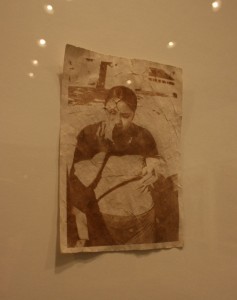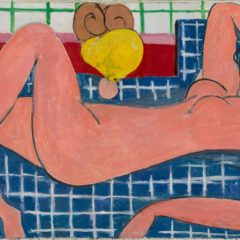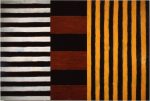Several shows this month in NoLibs above Spring Garden step outside the norms of a medium, bringing new life to photos, prints and clay.
At PPAC through May 15, .matrix includes work by artists interested in “pushing the limits of the printed image and how it is created, used and disseminated.” This isn’t your grandmother’s printmaking. Much of it purposefully challenges our perception of the single matrix, or surface onto which one unique print is impressed.
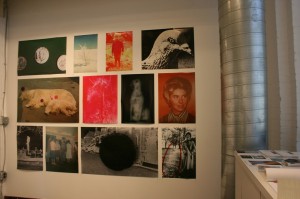
Kesselskramer Publishing’s wall of archival inkjet prints were achieved using the same kind of digital printing that any of us can use to run off copies of our vacation photos. Does the ability to make countless copies of the same print quickly and with very little effort cheapen the final product? In what ways do these prints blur the line between printmaking and photography? These are just the kind of questions .matrix hopes to provoke.
Many of the prints here are lovely to look at, but reading the labels is the key to really appreciating them. As with the Kasselskramer prints, the techniques are unexpected.
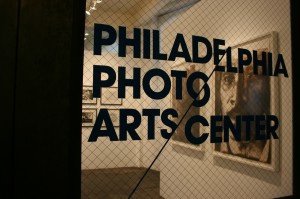
Donald E. Camp’s larger-than-life images of heads were made with casein and earth pigment on Arches rag paper. Matthew Brandt used his subjects’ own bodily fluids to texture and color his small character studies.
Paul Swenbeck and Nick Lenker’s collaborative show at Bambi is a twisted fever dream, in clay. Imagination and spontaneity drive these pieces, and the curator’s description reminds us that this approach to shaping clay, and the work that it produced here, is a big break from traditional ceramics.
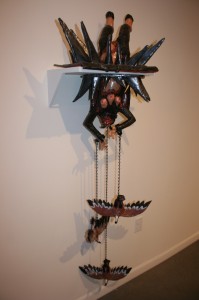
Libby and Roberta said it best last week: these two are “the boys of darkness.” The gore-factor is simultaneously off-putting and intriguing. These are the kind of pieces that make you take two steps forward, one step back in confusion, and then a step forward again for another look. I was most drawn to the mythological references, as in Lucifer, above. But symbolism aside, the oozing eyes were just plain great.
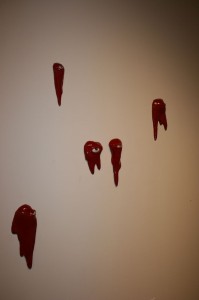
There was more clay to be had at Projects Gallery, where To Die For is on through May 1. Like Swenbeck and Lenker, the artists showing here are putting a new spin on the medium. Instead of breaking with the past though, they are riffing off of it. Ceramics, like canopic jars in ancient Egypt, have long played a role in death rituals, and these sculptors use clay to deliver modern meditations on death.
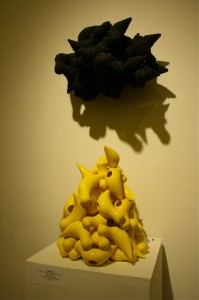
There is lots of dark humor, including in Gregg Moore’s canaries, and Janice Farley’s The Suicide Set (9 plates). And some artists even deal with non-human, or avian, death. David Furman bemoans The Death of Dessert & the Birth of McDonald’s in five pieces that morph from bowl of ice cream to Golden Arches franchise store.
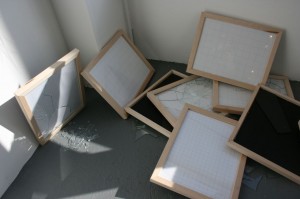
Finally, a quick hop over to Rebekah Templeton on Girard Ave. Sebastian Leclercq’s Supposedly fills the one-room gallery and covers the building’s exterior until April 24. No splashy clay pieces here, just 132 sheets of white paper with simple wooden frames. The sheets encircle the room, and moving from left to right, Leclercq added graphing lines one-by-one to achieve the final row of complete, hand-drawn graph paper. On the gallery floor at the end of this paper trail: a pile of graph paper, frames shattered, as if the monotony and tension of drawing one line at a time, and watching one line added at a time, became too much to bare.


